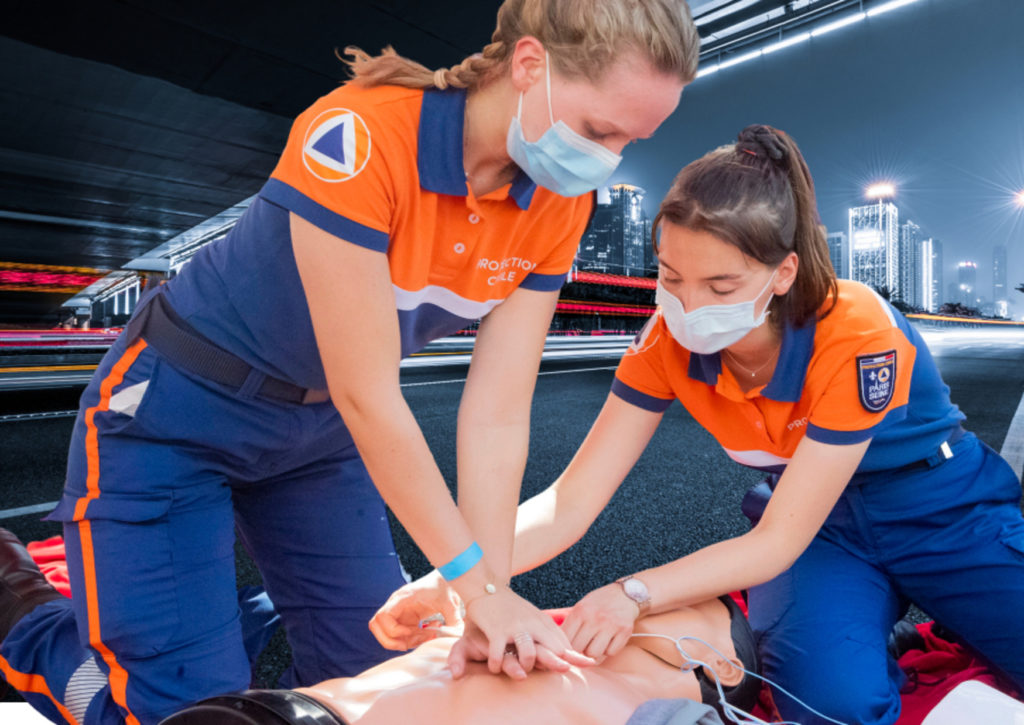
Joe is generous with his time and energy, always willing to listen and give advice. His strength and courage inspire everyone around him.
One day, he confessed to me that he was not feeling well. I could tell something was wrong with him, but he didn’t want to talk about it. After weeks of worrying, I finally got him to see a doctor, who discovered Joe had a heart problem. Today he is better, but a miracle saved him.
In the USA, every 40 seconds, someone suffers a heart attack. A heart attack is the most common heart disease. It occurs when blood flows to the heart and part of it is blocked, often by a blood clot, a thick, almost solid mass that forms when blood dries.
Occasionally, the lump is called a coronary thrombosis or coronary occlusion, caused by the rupture or tearing of plaque in an artery. A heart attack is also known as a myocardial infarction, which can also occur when a coronary artery temporarily contracts or goes into spasm, slowing or cutting off blood flow to the heart.
There are three main symptoms of a heart attack. One is pressure or pain in the center of the chest, which lasts for a few minutes or goes away and returns. A second symptom is when the pain spreads to the shoulders, neck, or arms. A third symptom is chest discomfort, combined with dizziness or shortness of breath.
What is the difference between a heart attack and cardiac arrest? A heart attack occurs when a blocked artery interrupts blood flow to the heart, but the heart usually continues to beat.
What are the causes of cardiac arrest? Specific causes of cardiac arrest arrhythmia, such as irregular heartbeats, can short-circuit the heart’s electrical system. A quarter of heart attacks cause cardiac arrest, either immediately or one to two hours later.
Can cardiac arrest be treated? In most cases, the only way to treat cardiac arrest is to shock the patient using a defibrillator.
What are other warning signs? Although the loss of consciousness is a fairly common phenomenon, it is a warning sign of sudden arrhythmic death syndrome if it occurs during physical activity, during bathing, or due to emotional turmoil.
Why is it important to intervene quickly? During cardiac arrest, blood flow must be restored within five minutes for the victim to survive. When the heart stops beating, blood circulation to organs such as the brain is interrupted.
How to live with a sick heart? Congestive heart failure, or CHF, is when a weakened heart cannot pump blood to the body. In this case, the heart requires extensive treatment and lifestyle changes to live as healthy and normal as possible.
Changes include a medication regimen, an exercise program, a heart-healthy diet low in sodium, fat, and calories, and a reduced fluid intake. Congestive heart failure is uncomfortable because the heart does not work efficiently, and the lungs and body retain large amounts of fluid. Along with medication to release the contained liquid, the patient is given a diet with low sodium. A diet’s standard amount of sodium is 2 g or 2000 mg.
Congestive heart failure is sometimes caused, in part, by obesity. Low-calorie, low-fat foods help keep the heart arteries free of clots. Not gaining weight if you are already thin, and losing weight if you are obese, is essential to health. The last part of a heart-healthy diet is fluid intake. Drinking plenty of fluids makes it harder for the body to get rid of fluids that build up naturally.
What are the symptoms of heart failure? The most common signs of heart failure are chest pain or discomfort, shortness of breath, choking, nausea, vomiting, tingling in the arms, sweating, or upper body discomfort. If you experience any of these symptoms, do not hesitate to call 911. When emergency services arrive, you will likely be given aspirin to thin your blood and reduce clotting.
New medical imaging technology. As with most medical imaging procedures, image quality is vital. If the scanned image does not depict all the minute details, the diagnosis may not be as accurate. And today’s latest technology allows physicians to see things they’ve never seen before, which means patients get the most precise diagnosis possible. Also, perform faster exams on critical patients who might have difficulty lying still for long periods. This new equipment produces a detailed three-dimensional image to allow physicians to view the heart from virtually any angle, resulting in greater confidence in diagnosing cardiac disease and abnormalities.
When is a heart transplant necessary? The answer to this question is complicated. Heart transplantation is considered when the patient has end-stage heart failure and all other failed treatments. The most common conditions requiring heart transplantation are advanced coronary artery disease, cardiomyopathy, and congenital heart disease. In each case, the patient’s heart has become so weakened that it cannot pump enough blood to meet the body’s needs.
